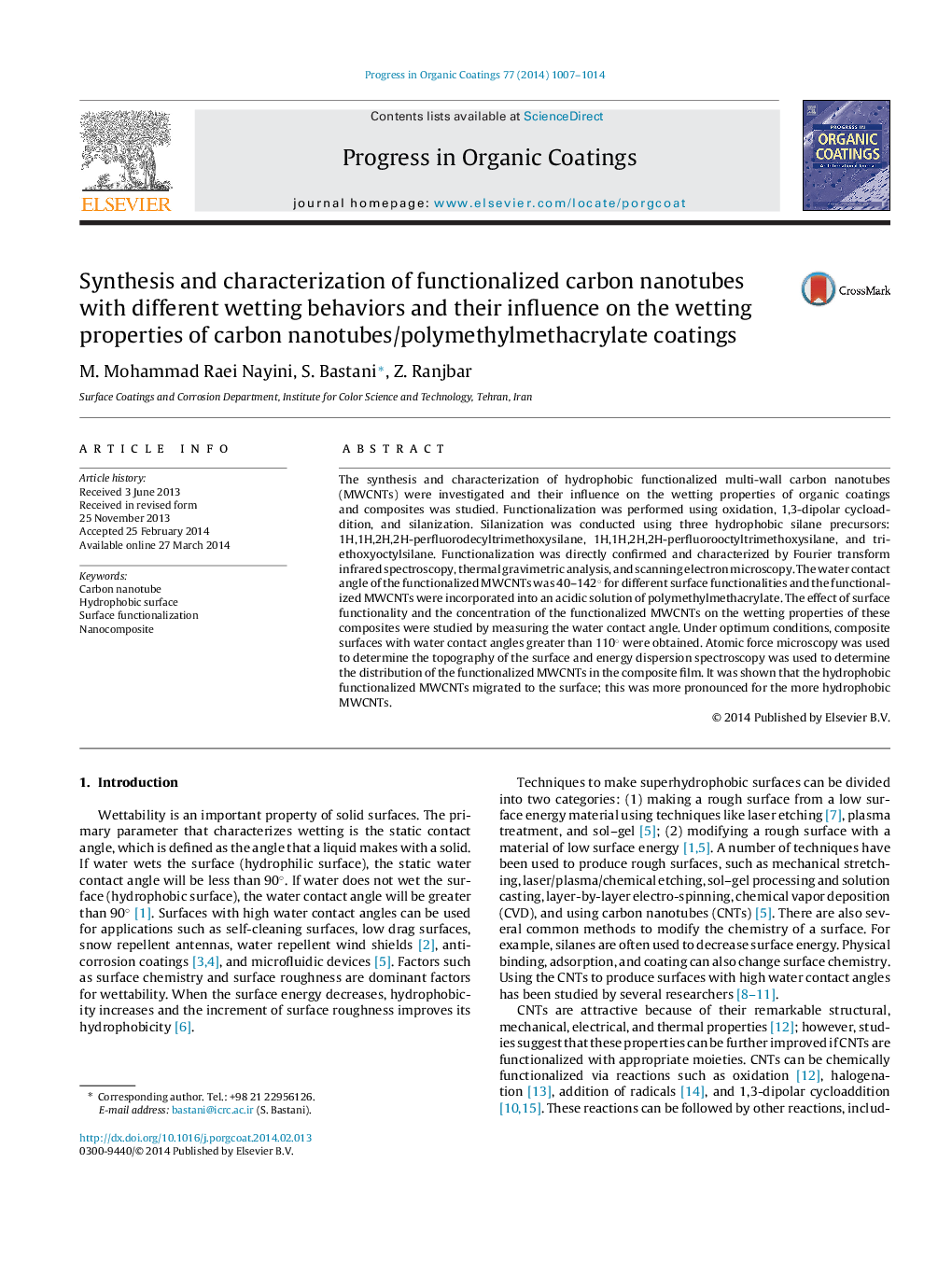| Article ID | Journal | Published Year | Pages | File Type |
|---|---|---|---|---|
| 10397959 | Progress in Organic Coatings | 2014 | 8 Pages |
Abstract
The synthesis and characterization of hydrophobic functionalized multi-wall carbon nanotubes (MWCNTs) were investigated and their influence on the wetting properties of organic coatings and composites was studied. Functionalization was performed using oxidation, 1,3-dipolar cycloaddition, and silanization. Silanization was conducted using three hydrophobic silane precursors: 1H,1H,2H,2H-perfluorodecyltrimethoxysilane, 1H,1H,2H,2H-perfluorooctyltrimethoxysilane, and triethoxyoctylsilane. Functionalization was directly confirmed and characterized by Fourier transform infrared spectroscopy, thermal gravimetric analysis, and scanning electron microscopy. The water contact angle of the functionalized MWCNTs was 40-142° for different surface functionalities and the functionalized MWCNTs were incorporated into an acidic solution of polymethylmethacrylate. The effect of surface functionality and the concentration of the functionalized MWCNTs on the wetting properties of these composites were studied by measuring the water contact angle. Under optimum conditions, composite surfaces with water contact angles greater than 110° were obtained. Atomic force microscopy was used to determine the topography of the surface and energy dispersion spectroscopy was used to determine the distribution of the functionalized MWCNTs in the composite film. It was shown that the hydrophobic functionalized MWCNTs migrated to the surface; this was more pronounced for the more hydrophobic MWCNTs.
Related Topics
Physical Sciences and Engineering
Chemical Engineering
Process Chemistry and Technology
Authors
M. Mohammad Raei Nayini, S. Bastani, Z. Ranjbar,
